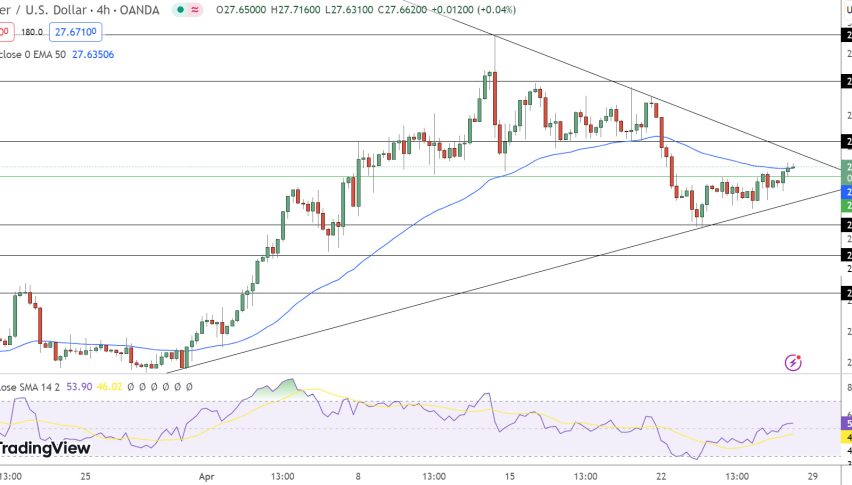Crude Fails to Extend Winning Streak – Combination of Factors in Play!
During Wednesday’s Asian trading session, the WTI Crude Oil prices failed to extend the winning streak of the previous day, dropping from the high of $ 39.81 to the $ 38.53 level, mainly due to downbeat inventory numbers from the American Petroleum Institute (API), which fueled worries about the oil demand. Apart from this, the resurgence of the coronavirus (COVID-19), which has led to further extensions in lockdown restrictions, has also added a burden to the crude oil prices. Furthermore, the worries over the supply side, triggered by the reports suggesting that Libya’s oil production/exports are expected to return to full capacity, could also be considered one of the key factors that kept the oil prices under pressure.
In the meantime, the lack of progress on reaching an agreement on a US coronavirus relief package increased the pessimism surrounding the crude oil prices. On the contrary, Saudi Arabia and Russia are set to agree on extending their oil production cuts and to postpone planned increases, which became the key factor that kept a lid on any additional losses in the crude oil prices. Meanwhile, the losses in crude were capped by the potential drop in US production, as oil companies started shutting offshore rigs, because a hurricane is approaching in the Gulf of Mexico. Crude oil is trading at $ 38.80 and consolidating in the range between 38.67 and 39.00.
As we have already mentioned, the US oil stockpiles increased sharply last week, which renewed concerns about the strength of the demand at a time when storm-related disruptions in the oil-rich US Gulf of Mexico have stifled output. On the data front, US crude inventories grew by 4.58 million barrels last week, after a build of 584,000 barrels the previous week, as per the estimate released data by the American Petroleum Institute. However, the build comes a day before the official government report, which is expected to show that weekly US crude supplies dropped by 1.2 million barrels last week.
Apart from this, the concerns over the oil demand were also fueled by the surging number of coronavirus infections. The second wave of the coronavirus has intensified across the United States, Russia, France and many other countries, undermining the global economic outlook. This, in turn, forced some states to impose fresh restrictions as winter looms. As per the latest report, the United States reported approximately 74,300 new coronavirus cases, pushing the country’s daily average over the past week above 71,000. In Europe, the number of coronavirus cases hit the highest level ever, reaching more than 52,000 on Sunday; France is preparing for a new lockdown. Meanwhile, the Former world hotspot, Italy, also reported a new record high of cases, as did the Netherlands. Besides this, Spain has also announced a national emergency and imposed a night-time curfew.
Besides the virus woes, another reason behind the investors’ cautious sentiment could also be associated with the long-lasting US-China tussle, which is continuously picking pace, and has intensified further, due to the potential sale of American-made missiles to Taiwan. The intensifying uncertainty ahead of the US presidential election, as to whether President Donald Trump gets to keep the White House or whether his challenger Joe Biden will make a clean sweep in the Nov. 3 elections, has kept the market investors cautious.
On the positive side, Saudi Arabia and Russia are likely to agree to extend their oil production cuts and postpone planned increases when they meet for talks with their OPEC+ partners at the end of November, and this might help to limit deeper losses in the oil prices.
In the meantime, the declines in the crude oil prices were capped by the possible drop in US production, as oil companies started shutting offshore rigs, due to an approaching hurricane in the Gulf of Mexico. Louisiana is set to face the 6th lashing this year, from a Gulf Coast system known as Tropical Storm Zeta, which is speeding off the Yucatan Peninsula, bringing high winds and rain to a region, which is still reeling from a series of storms. As per the latest report, Zeta was approximately 450 miles (720 km) from the mouth of the Mississippi River, and expected to hit an area between Louisiana and the Mississippi-Alabama border by late Wednesday, at or close to hurricane strength.
It is also worth reporting that the storm could lead to hurrican-force winds and a 4 to 6-foot (1.8-m) storm surge from Port Fourchon, Louisiana, to the Pearl River in Mississippi. The rain forecast is 2 to 4 inches (5-10 cm) at the coast. On the USD front, the broad-based US dollar failed to gain any positive traction, edging lower on the day, as doubts persist over the global economic recovery from COVID-19. Besides this, the US data showed that the Conference Board’s Consumer Confidence Index declined to 100.9 in October, from 101.3 in September, which also played a major role in undermining that US dollar.
However, the losses in the US dollar became the key factor that kept a lid on additional losses in crude oil prices, as the oil price is inversely related to the price of the US dollar. Meanwhile, the US Dollar Index, which tracks the greenback against a basket of other currencies, was down 0.2%, to 92.84, at 2:00 PM ET (18:00 GMT).
Elsewhere, the crude oil gains were capped by the on-going doubts over the US stimulus package, which is keeping the market trading sentiment under pressure; besides this, the tensions between the United States and China have picked up further pace. This, in turn, has undermined the market trading sentiment, becoming a key factor that is capping any further upside for oil prices.
Looking forward, the market traders will keep their eyes on the movement of the USD, amid the lack of major data/events on the day. Furthermore, the risk catalysts, like geopolitics and the coronavirus woes, not to forget the Brexit, will also be key to watch for fresh direction. Good luck!












